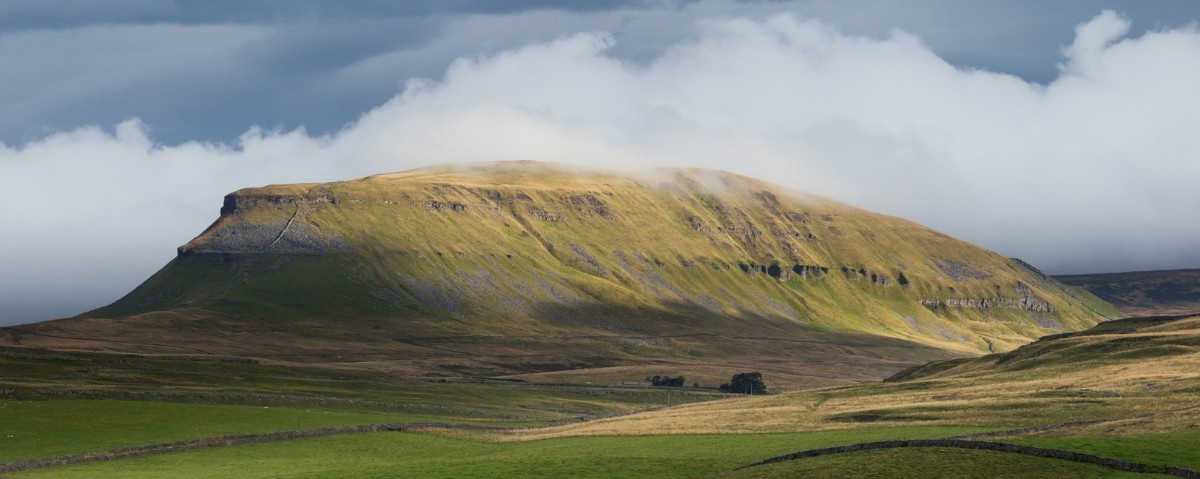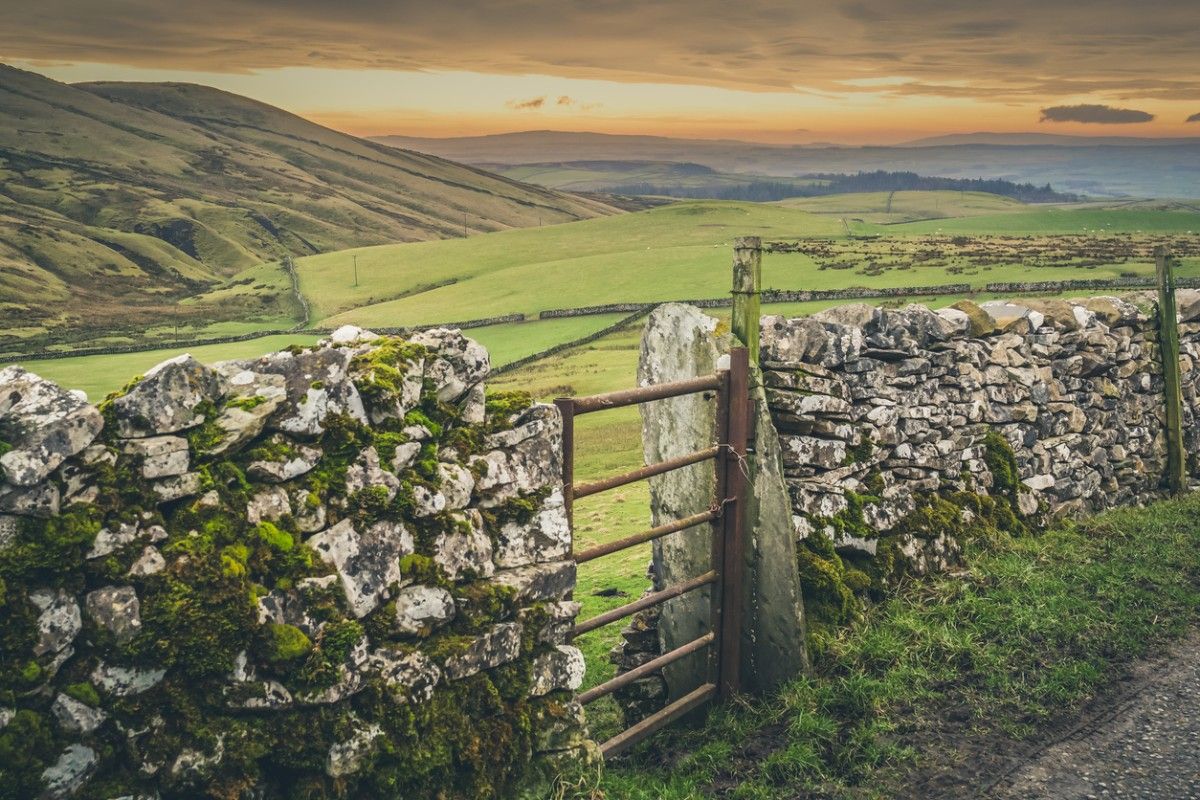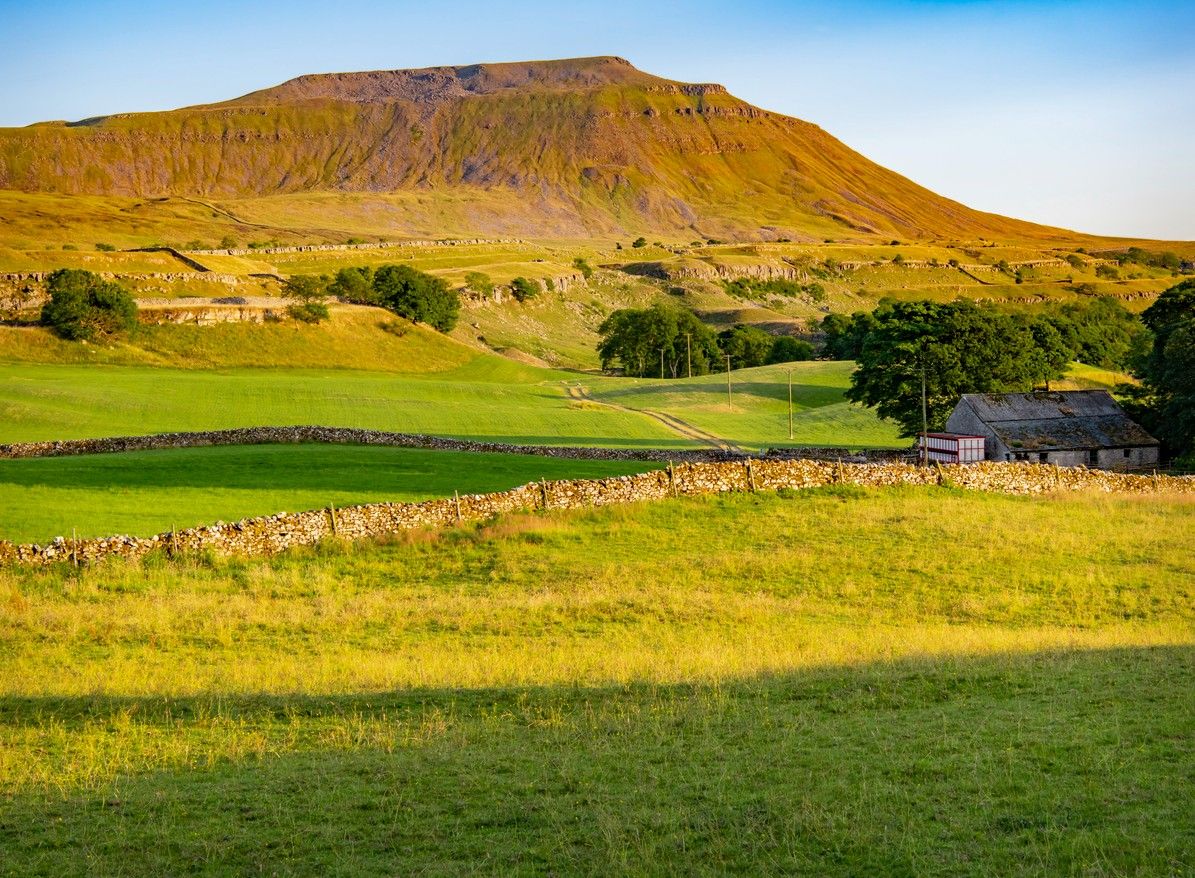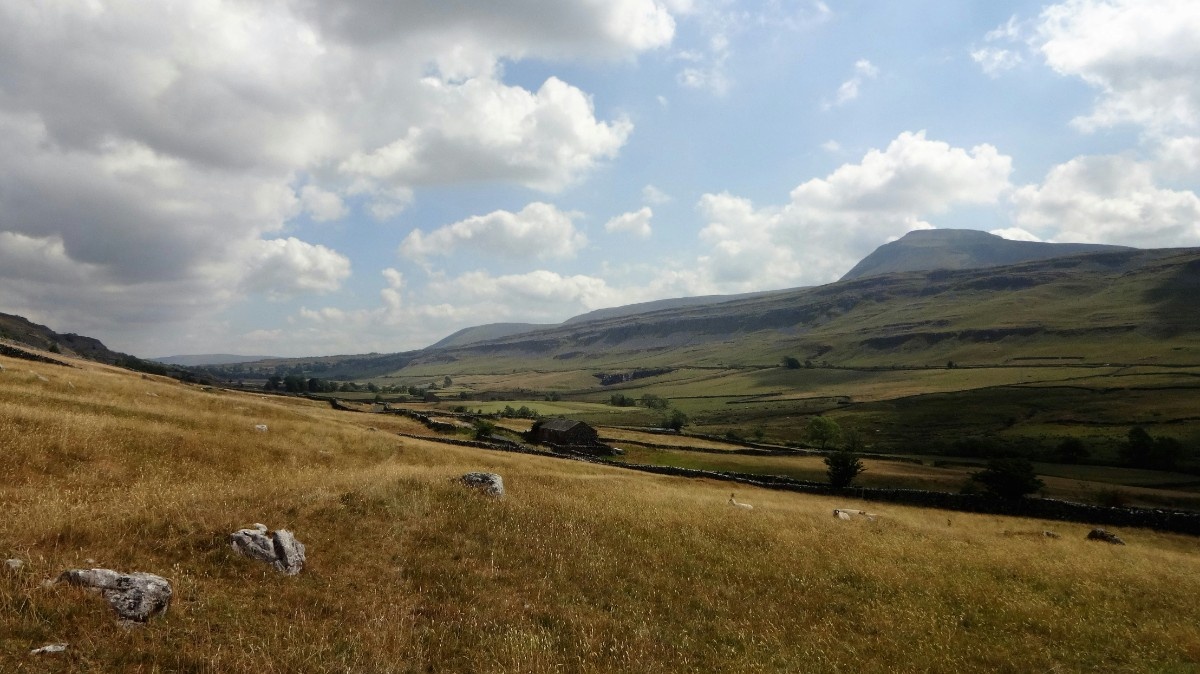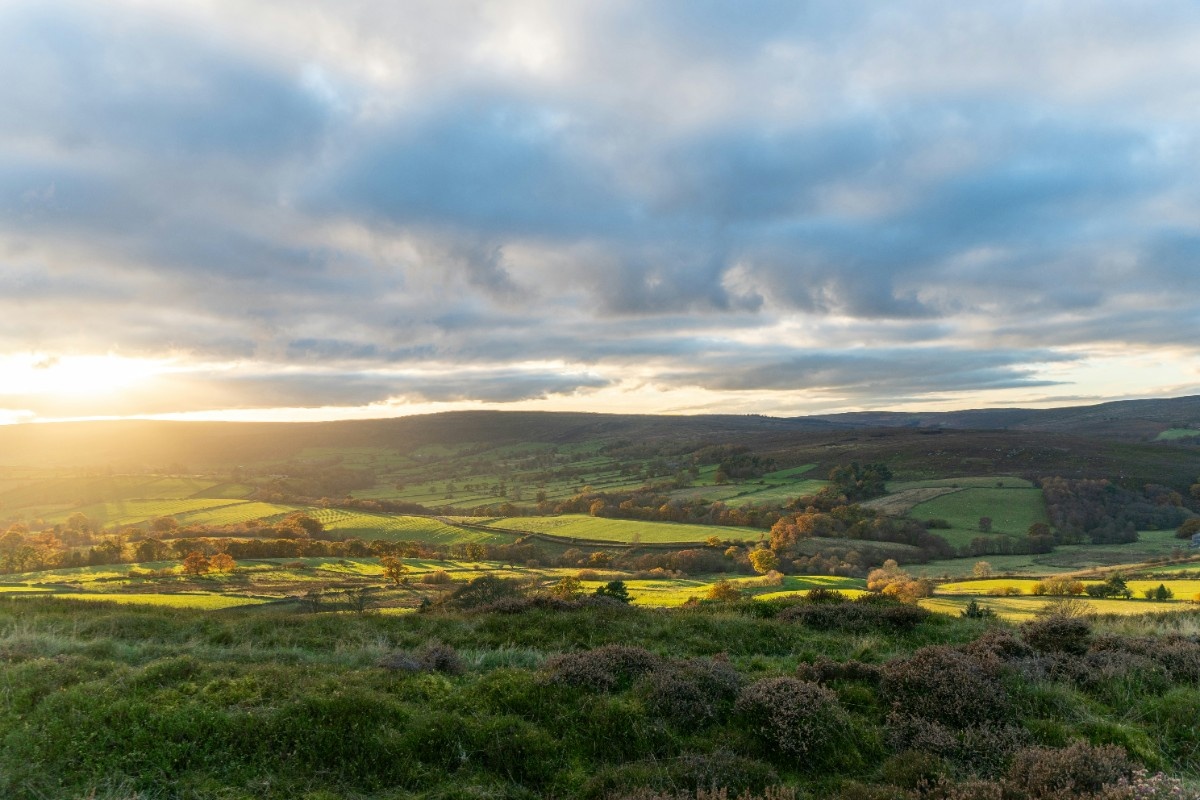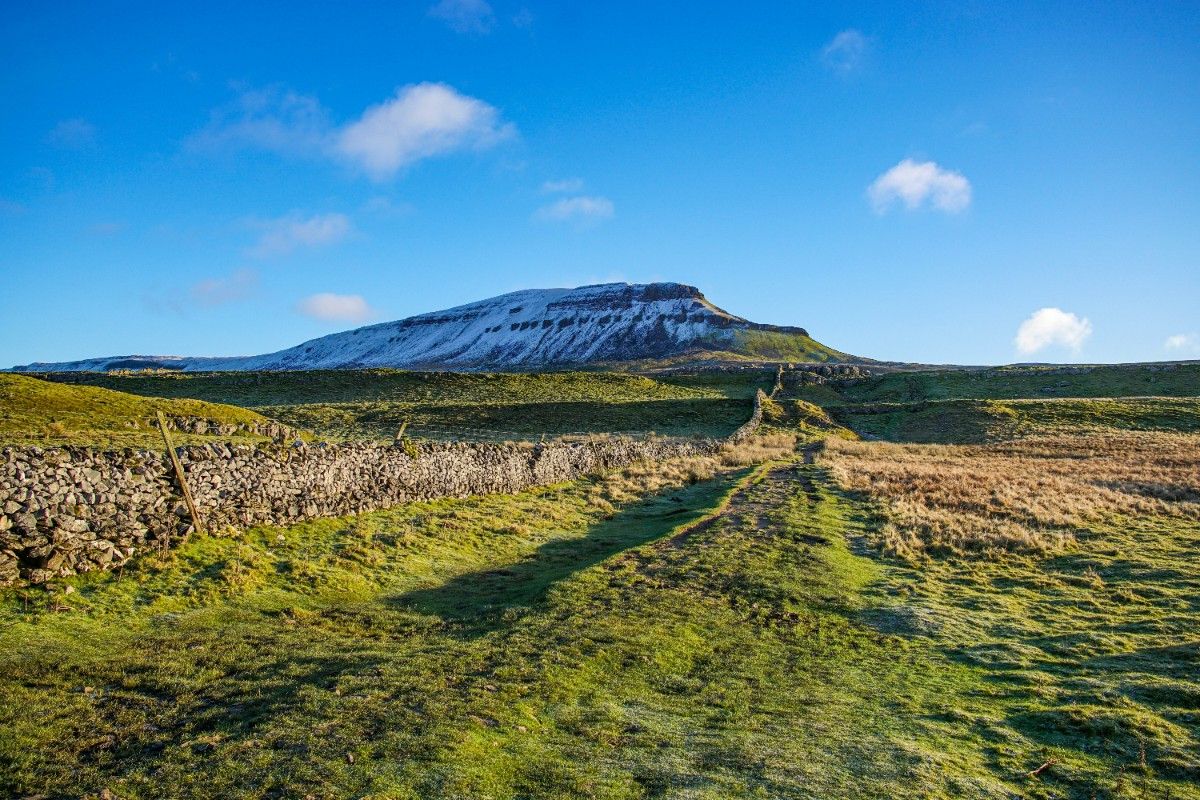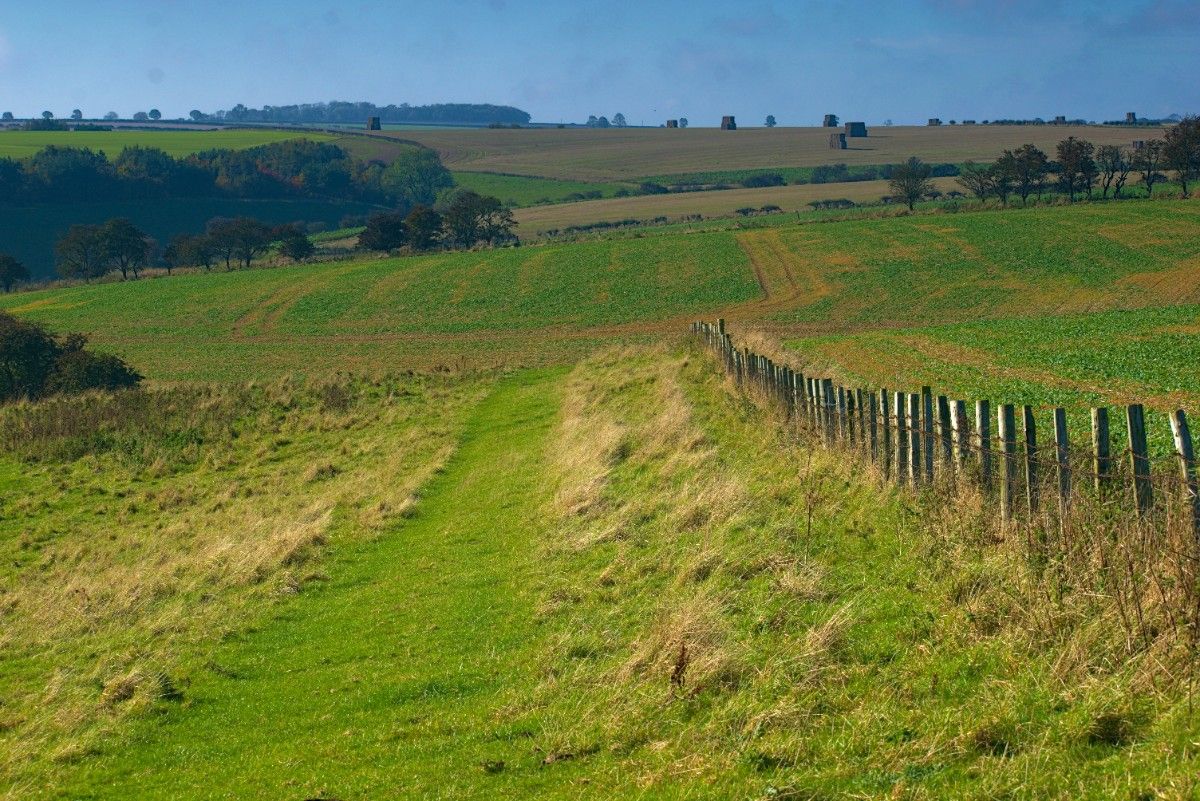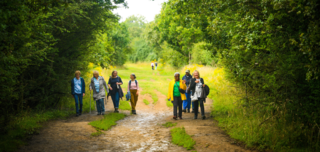Introduction to the Yorkshire Three Peaks Challenge
The Yorkshire Three Peaks Challenge is a renowned hiking adventure that takes place in the stunning Yorkshire Dales National Park, located in the heart of Northern England. This exhilarating challenge involves conquering three of Yorkshire's most iconic peaks - Pen-y-Ghent, Whernside, and Ingleborough - all within a 12-hour time frame. The Yorkshire Three Peaks route covers a distance of approximately 24 miles (38.6 kilometres) and involves a total ascent of around 1,585 metres (5,200 feet).
The History and Popularity of the Yorkshire Three Peaks Challenge
The Yorkshire Three Peaks Challenge has a rich history dating back to the late 19th century. The first recorded attempt to complete the challenge was made by a group of school teachers from London in 1887. Since then, the challenge has grown in popularity, attracting thousands of hikers and outdoor enthusiasts each year.
In the early days, the Yorkshire Three Peaks Challenge was primarily undertaken by local hiking clubs and enthusiasts. However, as word of the challenge spread, it began to attract hikers from across the United Kingdom and beyond. The challenge gained further prominence in the 1960s and 1970s, with the establishment of organised events and charity fundraisers.
Today, the Yorkshire Three Peaks Challenge is a bucket-list item for many hikers and has become a popular fundraising event for various charitable organisations. The challenge attracts participants of all ages and backgrounds, from seasoned hikers to novice walkers looking to push their limits and achieve a personal goal.
The popularity of the Yorkshire Three Peaks Challenge can be attributed to several factors. Firstly, the stunning natural beauty of the Yorkshire Dales provides a breathtaking backdrop for the hike, with rolling hills, dramatic peaks, and picturesque valleys. Secondly, the challenge offers a sense of achievement and camaraderie, as hikers work together to conquer the three peaks within the 12-hour time frame.
Moreover, the Yorkshire Three Peaks Challenge is accessible to a wide range of people, with no technical climbing skills required. While the hike is physically demanding, it can be completed by anyone with a good level of fitness and determination. The challenge also offers a unique way to explore the Yorkshire Dales National Park and connect with nature.
In recent years, the challenge has also gained attention for its potential environmental impact, with concerns raised about the erosion of footpaths and the pressure on local infrastructure. However, steps have been taken to promote sustainable hiking practices and encourage responsible use of the Yorkshire Three Peaks route.
Despite these challenges, the Yorkshire Three Peaks Challenge remains a beloved and iconic hiking adventure, drawing people from all walks of life to test their limits and experience the beauty of the Yorkshire Dales. As the challenge continues to evolve and adapt, it is sure to remain a staple of the UK hiking scene for generations to come.
The Yorkshire Three Peaks Route
Overview of the Route
The Yorkshire Three Peaks route is a well-established trail that takes hikers through some of the most stunning landscapes in the Yorkshire Dales National Park. The route covers a distance of approximately 24 miles (38.6 kilometres) and involves a total ascent of around 1,585 metres (5,200 feet).
The traditional starting and ending point for the Yorkshire Three Peaks Challenge is the village of Horton-in-Ribblesdale, which is easily accessible by car or public transport. Most hikers begin their challenge at the Pen-y-Ghent Café in the village centre, where they can fuel up before setting off on their adventure.
From Horton-in-Ribblesdale, the route takes hikers to the base of Pen-y-Ghent, the first of the three peaks. The ascent of Pen-y-Ghent is relatively steep, with a series of stone steps leading to the summit at 694 metres (2,277 feet). From the top, hikers are rewarded with stunning views of the surrounding countryside, including the iconic Ribblehead Viaduct.
After descending Pen-y-Ghent, the route continues towards Whernside, the highest of the three peaks at 736 metres (2,415 feet). The ascent of Whernside is more gradual than that of Pen-y-Ghent, with a series of switchbacks leading to the summit. From the top, hikers can enjoy panoramic views of the Yorkshire Dales, including the distinctive peak of Ingleborough in the distance.
The final peak on the Yorkshire Three Peaks route is Ingleborough, which stands at 723 metres (2,372 feet). The ascent of Ingleborough is perhaps the most challenging of the three, with a steep and rocky path leading to the summit. However, the sense of achievement upon reaching the top is unparalleled, with sweeping views of the surrounding landscape.
Throughout the route, hikers will encounter a variety of terrain, from grassy paths and rocky trails to limestone pavements and boggy moorland. The route is well-signposted, with clear markers guiding hikers along the way. However, it is essential to carry a map and compass and to be prepared for changes in weather conditions.
The Yorkshire Three Peaks route is typically completed within 12 hours, with hikers setting off early in the morning and aiming to finish by sunset. However, it's important to remember that the challenge is not a race, and hikers should take breaks as needed to rest, refuel, and enjoy the stunning scenery.
Pen-y-Ghent
Pen-y-Ghent is the first of the three peaks on the Yorkshire Three Peaks route, and is often considered the most accessible of the three. The peak stands at 694 metres (2,277 feet) and is characterised by its distinctive conical shape and limestone cliffs.
The ascent of Pen-y-Ghent begins at the Pen-y-Ghent Café in Horton-in-Ribblesdale, where hikers can stock up on supplies and use the facilities before setting off. The initial section of the route follows a well-defined path through fields and alongside a stream, before beginning the steep climb up the southern flank of the mountain.
As the path steepens, hikers will encounter a series of stone steps that have been laid to prevent erosion and make the ascent more manageable. The steps can be challenging, particularly in wet or icy conditions, and hikers should take care to watch their footing and use handholds where necessary.
Midway up the ascent, hikers will reach a distinctive feature known as the "Scramble" or the "Plod". This section involves a short, steep climb up a rocky gully, which can be intimidating for some hikers. However, the scramble is relatively short-lived and can be navigated with care and attention.
After the scramble, the path levels out somewhat, following a series of switchbacks up to the summit plateau. The final section of the ascent involves a gentle climb across the plateau to the summit trig point, where hikers can take in the stunning views of the surrounding countryside.
From the summit of Pen-y-Ghent, hikers can see across to Whernside and Ingleborough, the other two peaks on the Yorkshire Three Peaks route. On a clear day, it's also possible to see as far as the Lake District and the Forest of Bowland.
The descent from Pen-y-Ghent is relatively straightforward, following a well-defined path back down to the village of Horton-in-Ribblesdale. However, hikers should take care on the steep sections and watch out for loose rocks and uneven terrain.
One of the highlights of the Pen-y-Ghent ascent is the opportunity to spot some of the local wildlife, including red grouse, curlews, and peregrine falcons. The mountain is also home to a variety of rare plant species, including the Yorkshire Sandwort and the Bird's-eye Primrose.
Overall, the ascent of Pen-y-Ghent is a challenging but rewarding experience, offering hikers the chance to test their limits and experience the stunning natural beauty of the Yorkshire Dales. With its distinctive shape and stunning views, Pen-y-Ghent is an iconic feature of the Yorkshire Three Peaks Challenge and a must-visit destination for any hiking enthusiast.
Preparing for the Yorkshire Three Peaks Challenge
Physical Preparation
Preparing physically for the Yorkshire Three Peaks Challenge is crucial to ensure a successful and enjoyable experience. The challenge involves walking approximately 24 miles (38.6 kilometres) and climbing a total of 1,585 metres (5,200 feet) over the course of 12 hours. This demanding feat requires a good level of fitness and endurance.
To adequately prepare for the challenge, it's recommended to start training at least three months in advance. Begin by gradually increasing the distance and intensity of your walks, aiming to build up to walking for several hours at a time. Incorporate hills and uneven terrain into your training to simulate the conditions you'll face during the Yorkshire Three Peaks Challenge.
Cardiovascular exercises such as running, cycling, and swimming can also help improve your overall fitness and stamina. Aim to engage in these activities for at least 30 minutes, three to four times a week. As you progress, increase the duration and intensity of your workouts to further build your endurance.
Strength training is another important aspect of physical preparation. Focusing on exercises that target your legs, core, and upper body will help you tackle the steep ascents and descents of the Yorkshire Three Peaks route. Squats, lunges, step-ups, and calf raises are excellent exercises for strengthening your legs. Planks, bridges, and Russian twists can help enhance your core stability, while push-ups and pull-ups can improve your upper body strength.
In addition to regular training, it's essential to practice hiking with the gear you'll be using during the challenge. Wear your hiking boots on your training walks to break them in and prevent blisters. Carry a backpack with water, snacks, and any other essentials you plan to bring on the day of the challenge. This will help you get used to the weight and distribute it comfortably on your back.
As you train, pay attention to your body and gradually increase the intensity of your workouts. Listen to any aches or pains and allow yourself adequate rest and recovery time to prevent injury. Remember, the goal is to build up your endurance and strength steadily, not to overexert yourself before the actual challenge.
Mental Preparation
In addition to physical preparation, mental preparation is equally important when it comes to tackling the Yorkshire Three Peaks Challenge. The 12-hour hike can be mentally demanding, and having the right mindset can make all the difference in your success and enjoyment of the experience.
One key aspect of mental preparation is setting realistic goals and expectations. While completing the challenge within the 12-hour time frame is a common goal, it's important to remember that everyone's fitness level and hiking experience differs. Set a goal that is challenging but achievable for you, and be prepared to adjust your expectations if necessary based on weather conditions or other factors on the day of the hike.
Visualisation techniques can be a powerful tool in mental preparation. In the weeks and days leading up to the challenge, take some time to mentally walk through the Yorkshire Three Peaks route. Picture yourself successfully navigating each section of the hike, maintaining a steady pace, and feeling strong and confident. Visualise yourself reaching each peak and enjoying the stunning views of the Yorkshire Dales.
Positive self-talk is another important aspect of mental preparation. During the challenge, there may be moments when you feel tired, sore, or discouraged. Having a repertoire of positive affirmations can help you push through these tough moments. Remind yourself of your training, your strength, and your resilience. Celebrate your progress and the milestones you reach along the way, such as completing each peak or reaching the halfway point.
In addition to individual mental preparation, consider joining a group or hiking with friends for the Yorkshire Three Peaks Challenge. Having the support and encouragement of others can provide a mental boost and help keep you motivated throughout the hike. Sharing the experience with others can also make the challenge more enjoyable and memorable.
Another important aspect of mental preparation is breaking the challenge down into smaller, more manageable sections. Rather than focusing on the entire 24-mile route, concentrate on one peak at a time. Celebrate each summit as a victory and use the downtime between peaks to rest, refuel, and mentally regroup for the next ascent.
Finally, remember to enjoy the journey. The Yorkshire Three Peaks Challenge is an opportunity to push your limits, but it's also a chance to immerse yourself in the stunning natural beauty of the Yorkshire Dales National Park. Take moments throughout the hike to appreciate your surroundings, snap photos, and create lasting memories.
By combining physical and mental preparation, you'll be well-equipped to tackle the Yorkshire Three Peaks Challenge with confidence and resilience.
The History and Significance of the Yorkshire Three Peaks
Geological Formation and Significance
The Yorkshire Three Peaks - Pen-y-Ghent, Whernside, and Ingleborough - are not only a popular hiking challenge but also hold significant geological interest. The formation of these peaks dates back millions of years and provides insight into the complex geological history of the Yorkshire Dales.
The story of the Yorkshire Three Peaks begins in the Carboniferous period, approximately 350 million years ago. At this time, the area that is now the Yorkshire Dales was covered by a warm, shallow sea. Over millions of years, layers of sediment, including mud, sand, and the remains of marine life, accumulated on the seafloor. These layers were gradually compressed and cemented together to form sedimentary rocks, such as limestone and sandstone.
During the Carboniferous period, the region also experienced significant volcanic activity. This led to the formation of igneous rocks, such as dolerite, which can be seen in the distinctive dark bands and intrusions on the slopes of Whernside and Ingleborough.
The limestone that forms the bulk of the Yorkshire Three Peaks is of particular geological interest. It is primarily composed of calcium carbonate, which is derived from the shells and skeletons of marine organisms that once thrived in the warm, shallow sea. Over time, these remains were compressed and cemented together to create the limestone bedrock.
The limestone of the Yorkshire Three Peaks is characterised by its distinctive features, such as clints and grikes. Clints are the flat, stepped surfaces of the limestone pavement, while grikes are the deep, vertical fissures that separate the clints. These features are the result of the limestone being slowly dissolved by rainwater over millions of years, creating a unique and rugged landscape.
The geological significance of the Yorkshire Three Peaks extends beyond their formation. The peaks and the surrounding area are home to a wide range of geological features, including caves, sinkholes, and underground streams. These features are the result of the dissolution of the limestone bedrock by water, creating a complex network of subterranean passages and caverns.
The caves of the Yorkshire Three Peaks, such as the famous White Scar Cave and Ingleborough Cave, offer a fascinating glimpse into the geological history of the area. They contain a wealth of geological formations, including stalactites, stalagmites, and flowstones, which have formed over thousands of years through the deposition of calcite from dripping water.
In addition to their geological significance, the Yorkshire Three Peaks also play an important role in the ecology of the Yorkshire Dales. The unique habitats created by the limestone bedrock support a diverse range of flora and fauna, including rare species of wildflowers, birds, and insects.
The geological history and significance of the Yorkshire Three Peaks add an extra dimension to the hiking challenge, providing a deeper appreciation for the natural wonders of the Yorkshire Dales National Park.
Historical and Cultural Significance
The Yorkshire Three Peaks have played a significant role in the history and culture of the Yorkshire Dales, shaping the lives of the people who have lived and worked in the area for centuries.
The earliest evidence of human activity in the Yorkshire Dales dates back to the Mesolithic period, around 10,000 years ago. During this time, hunter-gatherers roamed the area, taking advantage of the abundant wildlife and natural resources. The peaks of Pen-y-Ghent, Whernside, and Ingleborough would have served as prominent landmarks, helping these early inhabitants navigate the landscape.
In the Bronze Age, around 4,000 years ago, the first farmers began to settle in the Yorkshire Dales. They cleared the forests and established small settlements, using the peaks as grazing land for their livestock. The remains of ancient field systems and stone walls can still be seen on the slopes of the Yorkshire Three Peaks, providing a tangible link to this early period of human history.
During the Roman period, the Yorkshire Dales became an important centre for lead mining. The Romans were attracted to the area by the rich mineral deposits, and they established a network of mines and roads to transport the lead to other parts of their empire. The peaks of the Yorkshire Three Peaks would have been important landmarks for the Roman miners, helping them navigate the landscape and locate the most productive mining sites.
In the medieval period, the Yorkshire Dales became an important centre for sheep farming and wool production. The peaks of the Yorkshire Three Peaks provided valuable grazing land for the large flocks of sheep that were kept by the local monasteries and landowners. The wool trade brought prosperity to the area, and many of the picturesque villages and towns that dot the landscape today have their roots in this period.
In the 18th and 19th centuries, the Yorkshire Dales became a popular destination for tourists and outdoor enthusiasts. The rugged beauty of the landscape, with its towering peaks and deep valleys, attracted visitors from all over the country. The Yorkshire Three Peaks Challenge emerged as a popular test of endurance for these early adventurers, and it remains a beloved tradition to this day.
The Yorkshire Three Peaks have also inspired countless artists, writers, and poets over the centuries. The Romantic poet William Wordsworth wrote extensively about the beauty of the Yorkshire Dales, and his works helped to popularise the area as a tourist destination. The peaks have also been featured in numerous paintings, photographs, and works of literature, cementing their place in the cultural landscape of the region.
Today, the Yorkshire Three Peaks continue to hold a special place in the hearts of the people who live and work in the Yorkshire Dales. The challenge of climbing the three peaks in a single day has become a rite of passage for many outdoor enthusiasts, and the sense of accomplishment that comes with completing the challenge is a source of great pride for the local community.
The historical and cultural significance of the Yorkshire Three Peaks adds depth and meaning to the hiking challenge, providing a connection to the rich heritage of the Yorkshire Dales and the people who have shaped its landscape over the centuries.
Tips for Successfully Completing the Yorkshire Three Peaks Challenge
Pacing and Time Management
One of the most crucial elements of successfully completing the Yorkshire Three Peaks Challenge is proper pacing and time management. The challenge involves hiking 24 miles (38.6 kilometres) and ascending a total of 1,585 metres (5,200 feet) within a 12-hour time frame. To achieve this, it's essential to maintain a steady pace throughout the hike and manage your time effectively.
Start by setting a realistic goal for yourself based on your fitness level and hiking experience. While the 12-hour target is a common goal, it's important to remember that everyone's abilities differ. If you're new to long-distance hiking or have limited experience with mountain terrain, it may be more realistic to aim for a 14 or 15-hour completion time.
To stay on track, break the Yorkshire Three Peaks route down into smaller, manageable sections. Allocate a specific amount of time for each peak and the connecting trails between them. For example, you might plan to complete Pen-y-Ghent in 2 hours, the trek to Whernside in 3 hours, Whernside itself in 2.5 hours, the journey to Ingleborough in 2.5 hours, and the final peak and descent back to Horton-in-Ribblesdale in 3 hours. By setting these intermediate goals, you can ensure that you're maintaining a suitable pace and avoid falling behind schedule.
It's also important to factor in rest breaks and time for refuelling. Plan to take short breaks every hour or so to catch your breath, hydrate, and eat a snack. These breaks should be kept brief, around 5-10 minutes, to avoid losing too much time. At the halfway point, consider taking a slightly longer break of 15-20 minutes to rest, eat a more substantial meal, and change into fresh socks if needed.
Throughout the hike, keep an eye on your progress and adjust your pace as necessary. If you find yourself falling behind schedule, avoid the temptation to rush or take shortcuts, as this can lead to exhaustion or injury. Instead, focus on maintaining a steady, sustainable pace and make up time gradually over the remainder of the route.
It's also crucial to be prepared for unexpected delays or challenges that may affect your pacing and time management. Weather conditions, such as heavy rain or strong winds, can slow your progress and require extra caution on steep or slippery sections of the trail. Similarly, if you or a member of your group experiences an injury or illness, it may be necessary to slow down or even abort the challenge if the situation demands it.
In case of emergencies, make sure you have a plan in place and carry a means of communication, such as a mobile phone, to call for assistance if needed. It's also a good idea to inform someone of your planned route and expected completion time before setting off, so they can raise the alarm if you don't return as scheduled.
By paying careful attention to pacing and time management, and being prepared for unexpected challenges, you can greatly increase your chances of successfully completing the Yorkshire Three Peaks Challenge within your desired time frame.
Nutrition and Hydration
Proper nutrition and hydration are essential for maintaining your energy levels and overall well-being during the Yorkshire Three Peaks Challenge. The strenuous nature of the 24-mile (38.6-kilometre) hike, combined with the ascent of 1,585 metres (5,200 feet), places significant demands on your body. To perform at your best and avoid fatigue or dehydration, it's crucial to fuel your body with the right nutrients and stay well-hydrated throughout the challenge.
Before setting off on the Yorkshire Three Peaks route, start your day with a nutritious, balanced breakfast. Opt for foods that are rich in complex carbohydrates and protein, such as oatmeal with fruit and nuts, wholegrain toast with eggs, or a banana with peanut butter. These foods will provide you with slow-release energy to help sustain you through the initial stages of the hike.
During the challenge, it's important to eat regularly to maintain your energy levels. Pack a variety of snacks that are easy to eat on the go, such as energy bars, trail mix, dried fruit, and nuts. These snacks should be high in carbohydrates and contain some protein and healthy fats to keep you feeling full and energised. Aim to eat a snack every hour or so, even if you don't feel particularly hungry, to prevent your energy levels from dropping too low.
At the halfway point or during a longer break, consider eating a more substantial meal, such as a sandwich, wrap, or pasta salad. This meal should be rich in complex carbohydrates and include some lean protein, such as chicken, tuna, or tofu, to help repair and rebuild your muscles. Avoid foods that are high in fat or fibre, as these can be difficult to digest and may cause stomach discomfort during the hike.
Staying hydrated is just as important as eating well during the Yorkshire Three Peaks Challenge. Dehydration can lead to fatigue, dizziness, and even heat exhaustion, which can seriously impact your performance and safety on the trail. Aim to drink water regularly throughout the hike, even if you don't feel thirsty. A good rule of thumb is to drink about 500ml of water per hour of hiking, depending on the weather conditions and your individual needs.
In addition to water, you may also want to pack some electrolyte drinks or tablets to help replace the salts and minerals lost through sweat. These can be particularly useful on hot days or if you're prone to heavy sweating. However, be cautious not to rely too heavily on sports drinks, as they can be high in sugar and may cause stomach upset if consumed in large quantities.
To make sure you have enough water and snacks to last the entire challenge, pack more than you think you'll need. It's better to have a little extra weight in your backpack than to run out of supplies halfway through the hike. If you're hiking with a group, consider dividing the supplies among the members to spread the weight evenly.
By paying attention to your nutrition and hydration needs, and packing appropriate supplies, you can help ensure that your body has the fuel it needs to successfully complete the Yorkshire Three Peaks Challenge.
Yorkshire Three Peaks Accommodation and Logistics
Accommodation Options
When planning your Yorkshire Three Peaks Challenge, one of the most important considerations is where to stay before and after the hike. The village of Horton-in-Ribblesdale, located at the base of Pen-y-Ghent, is the traditional starting and ending point for the challenge, and offers a range of accommodation options to suit different budgets and preferences.
One popular choice for hikers is the campsite at Holme Farm, which is situated just a short walk from the village centre. The campsite offers both pitches for tents and a limited number of camping pods, which provide a more comfortable and weather-proof option for those who prefer not to sleep on the ground. The pods are equipped with heating, lighting, and a small deck area, but you'll need to bring your own sleeping bags and mats. The campsite also has a well-maintained shower and toilet block, as well as a small shop selling basic supplies.
For those who prefer a more comfortable stay, there are several bed and breakfasts and guesthouses in Horton-in-Ribblesdale. These range from cosy, family-run establishments to larger, more modern properties, and offer a variety of room types and amenities. Many of these accommodations are used to catering to Yorkshire Three Peaks hikers and offer early breakfasts, packed lunches, and drying facilities for wet gear.
One of the most iconic places to stay in Horton-in-Ribblesdale is the Golden Lion Hotel, a traditional pub with rooms dating back to the 18th century. The inn offers comfortable, en-suite rooms with views of the surrounding countryside, as well as a hearty breakfast to set you up for the hike. The pub itself is a popular gathering spot for hikers, serving locally-brewed ales and delicious pub meals.
If you're looking for a more luxurious or romantic option, consider staying at the Pen-y-Ghent Cottage, a beautifully restored 17th-century cottage located just a few miles from Horton-in-Ribblesdale. The cottage offers two elegant en-suite rooms, as well as a cosy lounge with a log fire and a garden with stunning views of Pen-y-Ghent. The owners also provide a delicious breakfast made with locally-sourced ingredients.
For larger groups or those who prefer self-catering accommodation, there are several holiday cottages and apartments available for rent in and around Horton-in-Ribblesdale. These properties range from cosy, one-bedroom cottages to larger, multi-bedroom houses, and offer a range of amenities such as fully-equipped kitchens, living rooms, and outdoor spaces.
When booking your accommodation for the Yorkshire Three Peaks Challenge, it's important to do so well in advance, especially if you're planning to hike during peak season (May to September). Many of the accommodations in Horton-in-Ribblesdale are small and fill up quickly, so it's best to secure your booking as soon as you have your dates confirmed.
It's also worth considering staying an extra night after the challenge to give yourself time to rest and recover. Many hikers find that they appreciate a hot shower, a hearty meal, and a comfortable bed after completing the strenuous 24-mile hike.
No matter which accommodation option you choose, staying in Horton-in-Ribblesdale before and after your Yorkshire Three Peaks Challenge will allow you to fully immerse yourself in the stunning natural beauty and warm hospitality of the Yorkshire Dales.
Transportation and Parking
Arranging transportation and parking for your Yorkshire Three Peaks Challenge is an important aspect of planning your hike. The village of Horton-in-Ribblesdale, the traditional starting and ending point for the challenge, is located in a rural area of the Yorkshire Dales, and public transportation options are limited. However, with a bit of careful planning, you can ensure that you have a smooth and stress-free journey to and from the hike.
If you're driving to Horton-in-Ribblesdale, there are several parking options available in the village. The main car park is located at the Village Hall, just a short walk from the start of the Yorkshire Three Peaks route. The car park operates on a pay-and-display basis, with a flat fee for 24 hours of parking. It's important to note that the car park can fill up quickly during peak season, so it's best to arrive early to secure a spot.
An alternative parking option is the smaller car park at the Pen-y-Ghent Café, which is located at the start of the route. This car park is also pay-and-display, but has a limited number of spaces and is often reserved for café customers. If you're planning to eat at the café before or after your hike, it's worth checking if they offer parking for patrons.
If you're traveling to Horton-in-Ribblesdale by public transportation, the nearest train station is Settle, which is located about 6 miles (9.7 kilometres) from the village. From Settle, you can take a taxi or a local bus service to Horton-in-Ribblesdale. The bus service is limited, however, so it's important to check the timetables in advance and plan your journey accordingly.
For those traveling from further afield, the nearest major airports are Manchester and Leeds Bradford, both of which are around a 2-hour drive from Horton-in-Ribblesdale. From these airports, you can either rent a car or take a train to Settle and then a taxi or bus to the village.
If you're planning to hike the Yorkshire Three Peaks Challenge as part of an organised group or charity event, transportation may be arranged for you. Many event organisers provide coaches or minibuses to transport participants to and from Horton-in-Ribblesdale, as well as support vehicles along the route. It's worth checking with your event organiser to see what transportation options are available.
In addition to arranging transportation to and from the hike, it's also important to consider your journey home after completing the challenge. The Yorkshire Three Peaks route is a strenuous 24-mile (38.6-kilometre) hike, and many people find that they are exhausted and sore after finishing. If you're driving home, it's important to make sure you're well-rested and alert before getting behind the wheel. If you're relying on public transportation, make sure you have a clear plan for getting back to your accommodation or to the train station.
Overall, while arranging transportation and parking for the Yorkshire Three Peaks Challenge may require some extra planning, it's an essential part of ensuring that you have a safe and enjoyable hike. By considering your options in advance and making a clear plan, you can focus on the excitement and challenge of the hike itself, rather than worrying about logistics on the day.
The Yorkshire Three Peaks Challenge and Sustainability
Environmental Impact and Preservation
The Yorkshire Three Peaks Challenge has become increasingly popular in recent years, attracting thousands of hikers annually to the stunning landscapes of the Yorkshire Dales National Park. While this growth in tourism has brought economic benefits to the region, it has also raised concerns about the environmental impact of the challenge and the need for sustainable practices to preserve the delicate ecosystems of the area.
One of the main environmental concerns associated with the Yorkshire Three Peaks Challenge is erosion. The high volume of foot traffic on the trails can lead to soil compaction, vegetation damage, and the widening of footpaths. This erosion not only detracts from the natural beauty of the area but can also have negative impacts on the flora and fauna that call the Yorkshire Dales home.
To address this issue, the Yorkshire Dales National Park Authority has implemented several measures to promote sustainable hiking practices. These include encouraging hikers to stay on designated trails, promoting the use of eco-friendly toilets, and working with local landowners to maintain and repair footpaths. The authority also conducts regular monitoring of the trails to assess erosion levels and identify areas in need of restoration.
Another environmental concern related to the Yorkshire Three Peaks Challenge is litter. With so many hikers passing through the area, it's inevitable that some litter will be left behind, whether intentionally or accidentally. This litter can have negative impacts on the wildlife and natural beauty of the area, as well as detracting from the experience of other hikers.
To combat littering, the Yorkshire Dales National Park Authority has launched education campaigns to encourage hikers to follow the "Leave No Trace" principles. These principles include packing out all waste, disposing of waste properly, and leaving the natural environment as you found it. Many hiking groups and event organisers have also taken up the cause, promoting litter-free hiking and organising clean-up events along the Yorkshire Three Peaks route.
In addition to erosion and littering, the Yorkshire Three Peaks Challenge can also have impacts on the local communities and infrastructure of the Yorkshire Dales. The influx of hikers during peak season can put a strain on local resources, such as parking, public toilets, and emergency services. To mitigate these impacts, the Yorkshire Dales National Park Authority works closely with local communities and businesses to develop sustainable tourism strategies and ensure that the benefits of tourism are shared by all.
One example of a sustainable tourism initiative in the Yorkshire Dales is the "Three Peaks Project," a partnership between the national park authority and local businesses to promote responsible tourism and support conservation efforts. The project includes a visitor payback scheme, where hikers can make a voluntary contribution to support the maintenance and restoration of the Yorkshire Three Peaks footpaths.
Ultimately, the key to ensuring the long-term sustainability of the Yorkshire Three Peaks Challenge is education and collaboration. By working together to promote responsible hiking practices, support local communities, and preserve the natural beauty of the Yorkshire Dales, we can ensure that this iconic challenge remains a treasured experience for generations to come. As hikers, we all have a role to play in being good stewards of the environment and leaving a positive legacy in the places we explore.
Responsible Hiking Practices
Engaging in responsible hiking practices is essential for ensuring the sustainability of the Yorkshire Three Peaks Challenge and preserving the natural beauty of the Yorkshire Dales National Park. By following a few simple guidelines, hikers can minimise their environmental impact and contribute to the long-term health of the ecosystems they are exploring.
One of the most important responsible hiking practices is to stay on designated trails. The Yorkshire Three Peaks route is well-established and clearly marked, and straying from the path can lead to vegetation damage, soil erosion, and disturbance of wildlife habitats. By sticking to the trail, hikers can help to concentrate the impact of foot traffic and allow the surrounding environment to thrive.
Another key aspect of responsible hiking is proper waste management. Hikers should follow the "Leave No Trace" principles and pack out all waste, including food scraps, packaging, and human waste. This means carrying a bag for rubbish and disposing of it properly at the end of the hike, rather than leaving it behind on the trail. For human waste, hikers should use designated toilets where available or follow guidelines for burying waste in catholes away from water sources and trails.
In addition to managing waste, hikers should also be mindful of their impact on the local environment in other ways. This includes avoiding damaging or removing vegetation, such as picking wildflowers or carving initials into trees. Hikers should also be respectful of wildlife and observe animals from a distance, rather than approaching or feeding them.
Water conservation is another important aspect of responsible hiking, especially in areas like the Yorkshire Dales where water sources may be limited. Hikers should carry enough water to last the entire hike and avoid contaminating streams or rivers with soap, detergent, or other pollutants. In some cases, it may be necessary to treat or filter water from natural sources to ensure it is safe to drink.
Responsible hiking also means being prepared for the conditions and having the proper equipment to ensure safety and minimise impact. This includes wearing appropriate footwear and clothing for the terrain and weather, carrying a map and compass or GPS device, and packing essential safety gear such as a first aid kit and emergency shelter. By being self-sufficient and prepared, hikers can reduce the strain on local emergency services and minimise the risk of accidents or injuries.
Finally, responsible hiking means being respectful of other hikers and the local community. This includes yielding to uphill hikers, keeping noise levels down, and being courteous to other trail users. It also means supporting local businesses and economies in a sustainable way, such as by purchasing supplies locally and using established accommodation and transportation services.
By adopting these responsible hiking practices, individuals who take on the Yorkshire Three Peaks Challenge can help to ensure that the experience remains sustainable and enjoyable for years to come. Through education, awareness, and individual action, we can all play a part in preserving the natural beauty and ecological integrity of the Yorkshire Dales National Park while still enjoying the challenge and adventure of the Yorkshire Three Peaks.
Frequently Asked Questions about the Yorkshire Three Peaks Challenge
Training and Preparation
Q: How fit do I need to be to complete the Yorkshire Three Peaks Challenge?
A: The Yorkshire Three Peaks Challenge is a strenuous 24-mile (38.6-kilometre) hike with a total ascent of 1,585 metres (5,200 feet). While it is achievable for most people with a good level of fitness, it does require proper training and preparation. It is recommended that hikers engage in regular cardiovascular exercise, such as walking, running, or cycling, in the weeks and months leading up to the challenge. Building up to longer hikes on varied terrain can also help to condition the body for the demands of the route.
Q: What kind of equipment do I need for the Yorkshire Three Peaks Challenge?
A: Proper equipment is essential for a safe and successful Yorkshire Three Peaks hike. Key items include sturdy, broken-in hiking boots with good ankle support and traction, moisture-wicking clothing layers, a waterproof jacket and trousers, a backpack with a hydration system or water bottles, a map and compass or GPS device, a first aid kit, and a headtorch or torch. Other recommended items include trekking poles, high-energy snacks, and a mobile phone for emergencies. It's important to test out equipment beforehand and ensure a comfortable fit.
Q: Do I need to train on the actual Yorkshire Three Peaks route before the challenge?
A: While it's not necessary to train on the actual route, it can be helpful to familiarise yourself with the terrain and conditions you'll encounter on the day of the challenge. If possible, try to incorporate some hikes on similar terrain, such as hills or mountains, into your training regimen. This will help you to gauge your fitness level and identify any areas where you may need additional preparation or equipment. If you can't make it to the Yorkshire Dales for training, studying maps and route descriptions can also help you to mentally prepare for the challenge.
Q: How long should I train for the Yorkshire Three Peaks Challenge?
A: The amount of training time needed will vary depending on your current fitness level and hiking experience. As a general guideline, it's recommended to start training at least 12 weeks before the challenge, gradually increasing the distance and difficulty of your hikes. Aim to include at least one longer hike (6-8 hours) in your training to build endurance and test out your equipment. However, it's important to listen to your body and not overdo it, as overtraining can lead to injury or burnout. Consult with a fitness professional or experienced hiker if you have any concerns about your training plan.
Safety and Navigation
Q: How well-marked is the Yorkshire Three Peaks route?
A: The Yorkshire Three Peaks route is generally well-marked with signposts and waymarkers, particularly at key junctions and turning points. However, it's still important to carry a map and compass or GPS device and know how to use them for navigation. The route crosses some remote and exposed terrain, and weather conditions can change quickly in the Yorkshire Dales, potentially obscuring markings or making navigation more challenging. It's also a good idea to familiarise yourself with the route beforehand and have a general sense of the direction and landmarks to look out for.
Q: What should I do if I get lost or injured during the Yorkshire Three Peaks Challenge?
A: If you get lost or injured during the challenge, the first priority is to stay calm and assess the situation. If you have a map and compass or GPS device, try to determine your location and the best route back to the main path or to safety. If you are unable to navigate or are seriously injured, call for help using a mobile phone or emergency whistle. The emergency services number in the UK is 999, and mountain rescue teams are available to assist hikers in distress in the Yorkshire Dales. It's important to carry a fully charged mobile phone and a backup battery or charger, as well as a whistle and basic first aid supplies.
Q: Are there any particularly dangerous sections of the Yorkshire Three Peaks route?
A: While the Yorkshire Three Peaks route is generally safe for prepared hikers, there are some sections that require extra caution. The ascent and descent of each peak can be steep and rocky, with potential hazards such as loose scree, uneven surfaces, and exposure to drops. The summit plateaus of Whernside and Ingleborough can also be exposed to strong winds and cold temperatures, even in summer months. Hikers should take care to stay on the designated path, watch their footing, and use trekking poles for stability if needed. It's also important to check weather forecasts and be prepared for changing conditions, as fog, rain, or high winds can make the route more challenging.
Q: What should I do if I encounter bad weather during the Yorkshire Three Peaks Challenge?
A: The weather in the Yorkshire Dales can be unpredictable, and it's not uncommon to encounter rain, wind, or fog during the Yorkshire Three Peaks Challenge. If you encounter bad weather, the first priority is to assess the severity of the conditions and whether it is safe to continue. If visibility is severely reduced or there is a risk of lightning or hypothermia, it may be necessary to retreat to lower ground or seek shelter. If conditions are manageable, make sure to have appropriate waterproof and insulating layers, as well as a headlamp or torch in case of reduced visibility. Stay on the designated path and take extra care with footing and navigation. If you are unsure about continuing, it's always better to err on the side of caution and turn back or seek assistance.
Related Articles

Let us know you agree to cookies
We use marketing, analytical and functional cookies as well as similar technologies to give you the best experience. Third parties, including social media platforms, often place tracking cookies on our site to show you personalised adverts outside of our website.
We store your cookie preferences for two years and you can edit your preferences via ‘manage cookies’ or through the cookie policy at the bottom of every page. For more information, please see our cookie policy.
